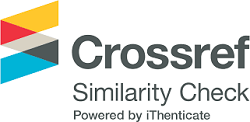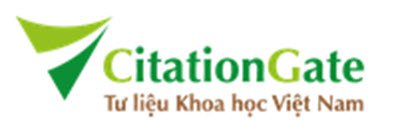Journal of Advanced Engineering and Computation
JAEC Annual Best Cited Paper Award
Announcement: 2019 JAEC Best Cited Paper Award |
||
|
Journal of Advanced Engineering and Computation (JAEC) has announced JAEC Annual Best Cited Paper Award for research and review articles of the JAEC. The purpose of this award is to recognize the best-cited paper published in the past three (03) years that attracts the most citations. The quantity and quality of citations of papers are based on data from ISI and/or Scopus and/or Google Scholar that tracks the paper since its first publication. From 2017 to 2019, JAEC has published 64 research/review papers in 3 volumes and 10 issues. Top five papers with high quantity and quality of citations have been evaluated by the Award Selection Committee. Now, it is our pleasure to announce that Winner of 2019 Best Cited Paper Award is the paper entitled "Computational cardiovascular flow analysis with the variational multiscale methods" which is published in Volume 3, issue 2, pp. 366-405, 2019 by the authors K Takizawa*, Y Bazilevs, TE Tezduyar, MC Hsu. Congratulation on the 2019 Award Winner. The 2020 Award will be announced in early April 2021 |
|
|
| Click here to download JAEC flyer and share to friends | More... | |
AIMS & SCOPE
Journal of Advanced Engineering and Computation (JAEC) is a forum for the presentation of innovative ideas, approaches, developments, and research projects in the area of advanced engineering and computation. It serves to facilitate the exchange of information between researchers and industry professionals. Multi-disciplinary topics that connect the core areas of advanced engineering and computation and its applications are also covered in this journal.
It also aims to promote and coordinate developments in the field of advanced engineering and computation. The international dimension is emphasized in order to foster international collaboration in advanced engineering and computation to meet the needs of broadening the applicability and scope of the current body of knowledge.
READERSHIP
The journal provides a vehicle to help professionals, academics, researchers and policy makers working in fields relevant to advanced engineering and computation to disseminate information and to learn from each other's work.
CONTENTS
JAEC publishes original research papers, review papers, case reports, technical notes and short communications.
OPEN ACCESS
JAEC is a fully open access, single-blind peer reviewed, electronic and print, and a quarter-annual publication. Currently, Ton Duc Thang University is pleased to cover all publishing fees for the journal; as a result, authors do not have to pay any fees although their published papers are open to the reader.
TERM AND CONDITIONS
JAEC publishes Open Access articles under the terms of the Creative Commons Attribution License (http://creativecommons.org/licenses/by/4.0/), which permits use, distribution, and reproduction in any medium provided the original work is properly cited.
High operating temperatures of photovoltaic modules cause thermally-induced failures, degradation of the conversion efficiency and long-term reliability. As such, photovoltaic cells present limitations at high operating temperatures and anisotropic temperature distributions. Therefore, in order to maintain the temperature below the recommended operating temperature, there is a need for an effective cooling of the such power equipment. In this work, the thermal distribution in solar cells for a high concentration of photovoltaic system is numerically investigated using finite difference method. The parametric study in this work reveals significance of environmental parameters such as incident light, ambient conditions, wind velocity, and also material characteristics as well as the system size such as backplate emissivity, backplate coating, cell size, backplate thickness, and backplate length on the solar cell temperature. The solar cell temperature significantly reduces as the backplate thickness and emissivity, wind speed. However, reduction in backplate length potentially lower the cost and temperature of the solar cell. Also, increase in the incident light and ambient temperature cause increase in the solar cell temperature. It is anticipated that this work will contribute to an improved passive device design, particularly at the initial design stage when choosing the appropriate solar cell size and backplate thickness depending on the location of the project.
Excessive heat generation in systems often leads to their thermally-induced failures, continuous technical progress is important for high-performance equipment. Therefore, there is a need for an effective cooling of the such thermal equipment. In this present work, the thermal behavior of a convective rectangular porous fin exposed to an electric and magnetic field and with temperature-dependent internal heat generation was studied using differential transformation method. A good agreement was established between the results of the differential transformation method and the numerical method's results. Consequently, the significance of electromagnetic, porosity, convective, internal heat generation on the thermal performance of the porous fin are investigated using the approximate analytical method. The exploration of the impacts of the parameters on the passive device reveals that increasing the electromagnetic field, porosity and convective heat transfer parameters cause increase in the rate of heat transfer from the base of the fin. However, an increase in the internal heat generation and the thermal conductivity parameters cause the fin temperature to increase. It is believed that the present work will help in the better design of the passive device especially in an electromagnetic environment.
Certain methods involving inclusive-optic temporal-solved were employed for assessing the dynamism for individual conveyors within InGaN quantum formations subject to significant exciting condition. The conveyor duration as well as dispersion coefficient all display their considerable reliance upon the exciting power: under surging conveyor denseness, conveyor duration lessens while dispersiveness surges. Said mechanism have a greater presence for sampling units featuring greater In amount. Our empirical data is assessed under the setting involving dispersion-augmented reconsolidation caused by potent conveyor’s distinctive location within InGaN. Judging said setting, the pace for nonradioactive reconsolidation surges as the exciting process surges, being the cause for the sink activity for InGaN. The ABC evaluating expression for fitting illumination generated momentary latticework (IGML) motion was employed, denoting that the straightforward conveyor duration diminishes as the exciting process lessens, known as surplus conveyor denseness. Effect from Auger reconsolidation did not manifest, reaching the peak conveyor denseness which would be restricted under the emergence for highly rapid recreated reconsolidation activity. For the task of validating our assessment, the study herein concerns spectrum-solved distinctive.
The study herein concerns the optic attributes for multiple InGaN polar quantum well formations featuring disparate quantities for quantum well units (QWU) developed using one InGaN Si-integrated subjacent sheet. With a small quantity for QWUs, it is possible overshadow the ambient-heat inner quantum proficiency via thermal-ion discharge generated by QWUs. Said mechanism may manifest as the radioactive reconsolidation pace within InGaN QWUs may become small, caused by the integrated electrical zone throughout QWUs that assist the thermal-ion discharge activity in maintaining presence proficiently under ambient heat that impedes the intrinsic quantum proficiency. For the formations in our study, the radioactive reconsolidation pace would escalate under the influences from the Si-integrated subjacent sheet that abates the electrical zone throughout the QWUs. Under said mechanism, the influence from thermal-ion discharge would be substantially abolished, and as such, the inner quantum proficiency under ambient heat would not be related to the QWU quantity.
This paper follows our previous research in which we made a basic experiment to find out if it is possible to detect malware by multiple PE header detection. The previous results show us that there is a considerable amount of malwares that connect themselves to another file. This paper summarizes our previous results, updates the results and also expands them by adding an optimization method and also by including the scan of another (specific) types of data.

This is an Open Access article distributed under the terms of the Creative Commons Attribution License (http://creativecommons.org/licenses/by/4.0/), which permits unrestricted use, distribution, and reproduction in any medium, provided the original work is properly cited.
Modal kinetic energy (MKE) feature has been mostly employed for optimal sensor layout strategies; nevertheless, little attention is paid to use the feature to the field of structural damage detection. The article presents the extensive applicability of MKE change ratio (MKECR), a good damage sensitive parameter, to damage localization and quantification of laminated composite beams. The formulation of the parameter is based on the closed-form of element MKE sensitivity. The performance of the offered damage detection method is numerically verified by a clamped-clamped composite beam and a two-span continuous composite beam with different hypothetical damage scenarios. The influence of incomplete mode shapes, various noise levels as well as damage magnitudes on damage prediction results are also investigated. The obtained results from these numerical examples indicate that the offered method reliably localize the actually damaged elements and approximately estimate their severities, even under incomplete measurements at a high noise level.

This is an Open Access article distributed under the terms of the Creative Commons Attribution License (http://creativecommons.org/licenses/by/4.0/), which permits unrestricted use, distribution, and reproduction in any medium provided the original work is properly cited.
Tax consulting service is one of various professional consulting services and is interested to study by many researchers. Nevertheless, this issue has not been interested to research in Vietnam. This paper performs confirmatory factors analysis (CFA) and structural equation modeling (SEM) to identify the factors influencing the intentions of using tax consulting services of firms in Ho Chi Minh city, Vietnam. Specifically, this paper finds that the intentions depend on the “attitude toward the behavior” and “replacement”. In addition, through Chi-square test, it can be proven that the intentions also depend on type of firms and whether they have ever used tax consulting service or not. Based on the obtained results, the discussion and recommendation are also proposed.

This is an Open Access article distributed under the terms of the Creative Commons Attribution License (http://creativecommons.org/licenses/by/4.0/), which permits unrestricted use, distribution, and reproduction in any medium, provided the original work is properly cited.
Comparing graph databases with traditional,e.g., relational databases, some important database features are often missing there. Particularly, a graph database schema including integrity constraints is mostly not explicitly defined, also a conceptual modelling is not used. It is hard to check a consistency of the graph database, because almost no integrity constraints are defined or only their very simple representatives can be specified. In the paper, we discuss these issues and present current possibilities and challenges in graph database modelling. We focus also on integrity constraints modelling and propose functional dependencies between entity types, which reminds modelling functional dependencies known from relational databases. We show a number of examples of often cited GDBMSs and their approach to database schemas and ICs specification. Also a conceptual level of a graph database design is considered. We propose a sufficient conceptual model based on a binary variant of the ER model and show its relationship to a graph database model, i.e. a mapping conceptual schemas to database schemas. An alternative based on the conceptual functions called attributes is presented.

This is an Open Access article distributed under the terms of the Creative Commons Attribution License (http://creativecommons.org/licenses/by/4.0/), which permits unrestricted use, distribution, and reproduction in any medium, provided the original work is properly cited.
III-nitride nanowire-based light-emitting diodes (LEDs) have been intensively studied as promising candidates for future lighting technologies. Compared to conventional GaN-based planar LEDs, III-nitride nanowire LEDs exhibit numerous advantages including greatly reduced dislocation densities, polarization fields, and quantum-conned Stark effect due to the effective lateral stress relaxation, promising high-efficiency full-color LEDs. Beside these advantages, however, several issues have been identified as the limiting factors for further enhancing the nanowire LED quantum efficiency and light output power. Some of the most probable causes have been identified as due to the lack of carrier confinement in the active region, non-uniform carrier distribution, electron overflow, and the nonradiative recombination along the nanowire lateral surfaces. Moreover, the presence of large surface states and defects contribute significantly to the carrier loss in nanowire LEDs. Consequently, reported nanowire LEDs show relatively low output power. Recently, III-nitride core-shell nanowire LED structures have been reported as the most efficient nanowire white LEDs with a record-high output power which is more than 500 times stronger than that of nanowire white LEDs without using core-shell structure. In this context, we will review the current status, challenges, and approaches for the high-performance IIInitride nanowire LEDs. More specifically, we will describe the current methods for the fabrication of nanowire structures including top-down and bottom-up approaches, followed by characteristics of III-nitride nanowire LEDs. We will then discuss the carrier dynamics and loss mechanism in nanowire LEDs. The typical designs for the enhanced performance of III-nitride nanowire LEDs will be presented next. The color-tunable nanowire LEDs with emission wavelengths in the visible spectrum and phosphor-free nanowire white LEDs will be finally discussed.

This is an Open Access article distributed under the terms of the Creative Commons Attribution License (http://creativecommons.org/licenses/by/4.0/), which permits unrestricted use, distribution, and reproduction in any medium provided the original work is properly cited.
In this paper, hidden bifurcation routes to multiscroll chaotic attractors generated by saturated function series are explored. The method to nd such hidden bifurcation routes (HBR) depending upon two parameters is similar to the method introduced by Menacer, et al. (2016) for Chua multiscroll attractors. These HBR are characterized by the maximal range extension (MARE) of their attractors and coding the appearance order of the scrolls under the control of the two parameters. Moreover, these HDR have interesting symmetries with respect to the two parameters. The novelty that this article introduces, is firstly the paradigm of MARE and the formula giving their approximate value depending upon parameters p and q, which is linked to the size of the scrolls; secondly the coding of the HBR which is dened for the first time including the basic cell; and thirdly unearthing the symmetries of these routes, allowing to obtain their coding without any numerical computation.

This is an Open Access article distributed under the terms of the Creative Commons Attribution License (http://creativecommons.org/licenses/by/4.0/), which permits unrestricted use, distribution, and reproduction in any medium provided the original work is properly cited.










_Certificate1.jpg)